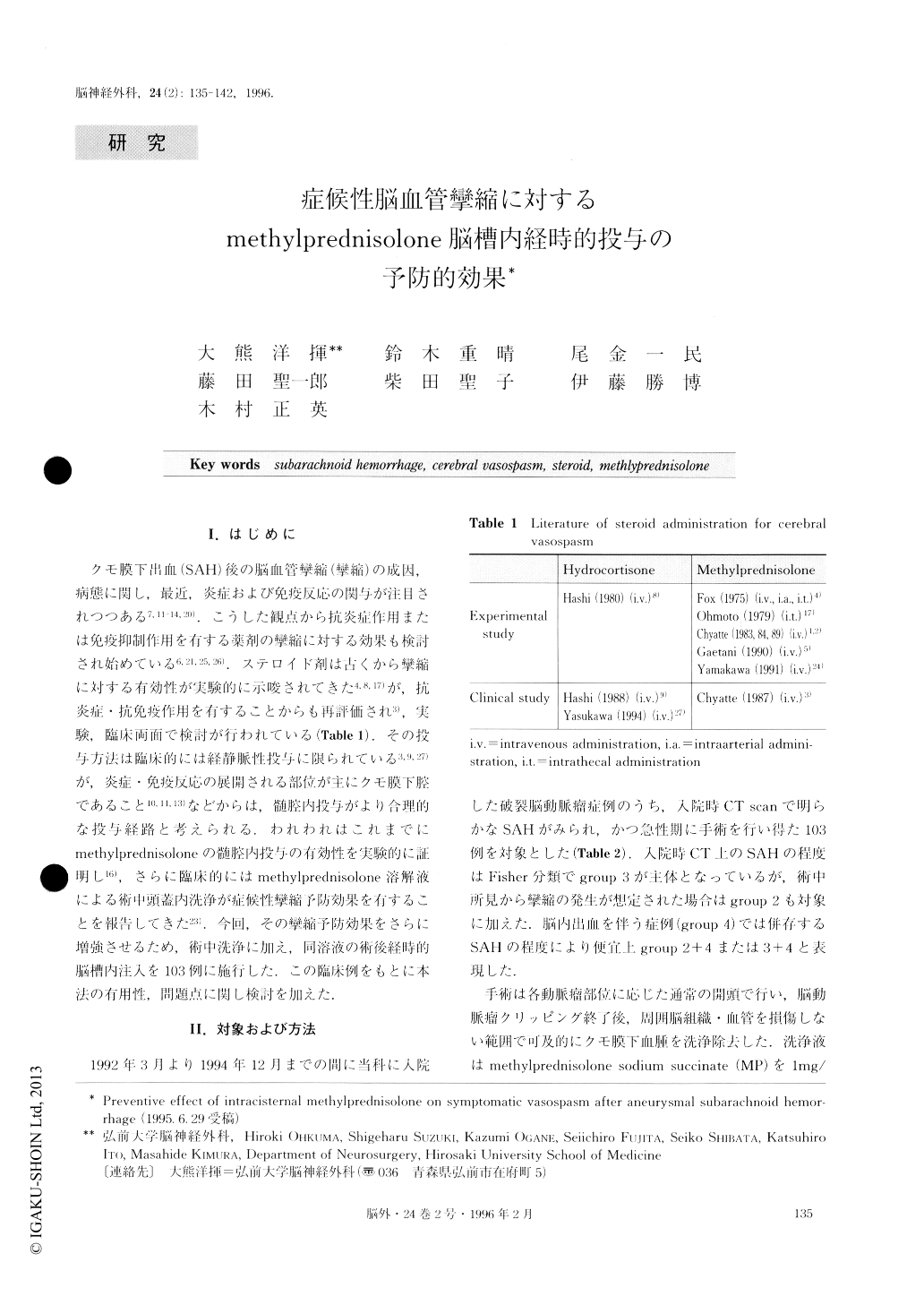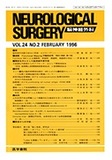Japanese
English
- 有料閲覧
- Abstract 文献概要
- 1ページ目 Look Inside
I.はじめに
クモ膜下出血(SAH)後の脳血管攣縮(攣縮)の成因,病態に関し,最近,炎症および免疫反応の関与が注目されつつある7,11-14,20).こうした観点から抗炎症作用または免疫抑制作用を有する薬剤の攣縮に対する効果も検討され始めている6,21,25,26).ステロイド剤は古くから攣縮に対する有効性が実験的に示唆されてきた4,8,17)が,抗炎症・抗免疫作用を有することからも再評価され3),実験,臨床両面で検討が行われている(Table 1).その投与方法は臨床的には経静脈性投与に限られている3,9,27)が,炎症・免疫反応の展開される部位が主にクモ膜下腔であること10,11,13)などからは,髄腔内投与がより合理的な投与経路と考えられる.われわれはこれまでにmethylprednisoloneの髄腔内投与の有効性を実験的に証明し16),さらに臨床的にはmethylprednisolone溶解液による術中頭蓋内洗浄が症候性攣縮予防効果を有することを報告してきた23).今回,その攣縮予防効果をさらに増強させるため,術中洗浄に加え,同溶液の術後経時的脳槽内注入を103例に施行した.この臨床例をもとに本法の有用性,問題点に関し検討を加えた.
A series of 103 patients with ruptured cerebral aneurysms were treated by intracranial irrigation, after aneurysmal clipping, with pH 8.0 Hartmann solution containing lmg/ml of methylprednisolone sodium suc-cinate, during operation. Postoperatively, 5ml/day of the solution was also injected until day 14, percu-taneously through an Ommaya reservoir into the cis-terns around the clipped aneurysm.
Six (5.7%) of the 103 patients suffered symptomatic vasospasm postoperatively. The Glasgow Outcome Scale at discharge of all patients indicated good recov-ery, Moderately disabled, Severely disabled and Vegetative state in 74 (72%), 18 (17%), 9 (9%) and 2 (2%) patients respectively. As a complication, subdural effusion was noticed in 17 (17%) patients, without any influence on outcome at all.

Copyright © 1996, Igaku-Shoin Ltd. All rights reserved.


